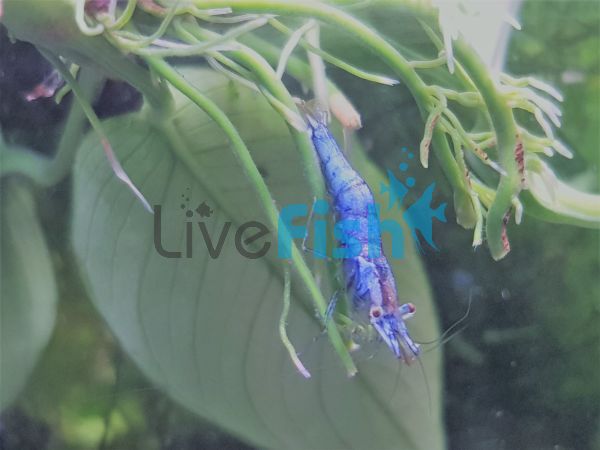Blue Glass Shrimp - Algae Eating
Paratya australiensis
This is a very rare blue colour morph of the standard Glass Shrimp Paratya australiensis.
$12.95
Availability: Out of stock
SKU
LP450025a
- Buy 10 for $5.99 each and save 54%
This is a very rare blue colour morph of the standard Glass Shrimp Paratya australiensis. This is not a Blue shrimp that has come from shrimp that were illegally imported into Australia. The Blue colour you see in these shrimps does change from quite a light blue to a dark deep blue. Or even a milky white. The colour seems to be more under the exoskeleton unlike the colours of the Cherry Shrimp which is the shell it's self. Most of this has to do with the environment they are in and what stage they are at in their molt cycle. Taken straight out of the pond they are milky white. But once put into a warm aquarium with some Fontinalis and other plants that white starts to go blue and darken. The image above shows the colours in there different stages. They can also go clear and end up with Black bands. It's quite remarkable how much these little guys change through out their lives. It has taken over 10 years of selective breeding to finally bring this blue out properly for the Shrimp hobbies to appreciate.These small shrimp, generally only reaching a maximum size of 2.5cm, are harmless omnivorous scavengers, suitable for any freshwater tank. As you can see, they are completely see-through, meaning that at a glance you can see what they last ate!They are particularly useful in home aquariums because they love to feed on algae, and keep your tank clean. If there is no algae, the shrimp will eat the leftovers of anything that you feed to your other fish. They are hardy little animals, and can generally take care of themselves.Glass Shrimp can be viewed as food by larger fish, but if they have plenty of cover in your aquarium, you can give them a good chance of survival in a fish-populated aquarium. As an example, we use them in tanks with our small rainbow fish to control the algae.Glass Shrimp are very unlikely to cause any harm to even your smallest fish or eggs, and are not really interested in anything moving.How many should you put in your tank? It is unwise to put much more than 60-100 into a 4 foot tank. They are quite small but with a large number of them they will add to the bio mass in the tank, and if the tank is already loaded with fish it could be too much for your filter system.Supplied shrimp are around 1-2cm long.




